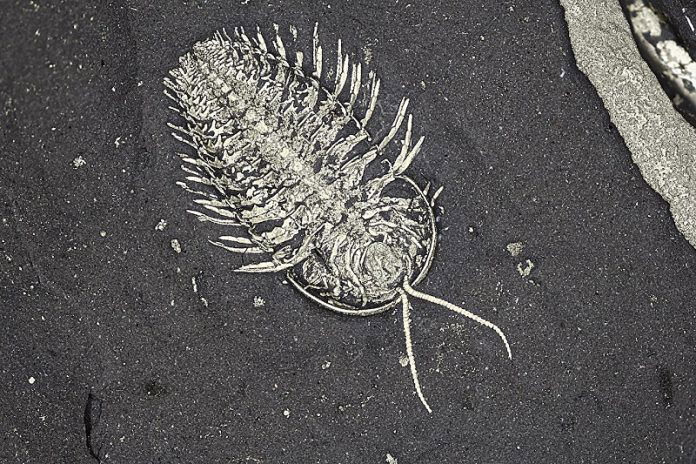
A recent study has revealed a surprising discovery about a species of trilobite, an ancient sea creature, found in upstate New York.
Researchers from the American Museum of Natural History and Nanjing University in China have found that this trilobite species, called Triarthrus eatoni, had an extra pair of legs under its head.
The study, published in the journal Palaeontology, suggests that having an extra set of legs might have been more common among trilobites than previously thought.
Trilobites are extinct arthropods, distant relatives of modern-day lobsters and spiders. Like many arthropods, trilobites had bodies made up of several segments.
Their head, in particular, was formed from a number of fused segments.
These segments were connected to appendages (like legs and antennae) that helped the trilobite sense its surroundings, move around, and even feed.
Understanding how many segments made up the trilobite head and how these were connected to other important body parts, like legs and eyes, is crucial for scientists studying the evolution of arthropods.
This helps researchers understand how different species of arthropods are related.
In this study, the researchers focused on Triarthrus eatoni fossils, which were incredibly well-preserved, showing even the soft parts of the trilobite’s body.
These fossils are unique because their hard exoskeleton has been replaced with shiny pyrite, allowing scientists to see the tiny legs and antennae on the underside of the creature.
The researchers, led by Melanie Hopkins and Jin-Bo Hou, discovered an extra leg under the trilobite’s head that had never been seen before.
This new finding is important because it helps solve a mystery: when scientists look at the trilobite’s upper exoskeleton, they count the segments differently than when they count the legs underneath. This mismatch has puzzled researchers for years.
By comparing these trilobite fossils with another species, Olenoides serratus, found in British Columbia, the scientists developed a model to explain how the head was segmented.
According to their model, the trilobite head had six segments: one for the eyes, and five others connected to the antennae and walking legs.
This study also builds on previous work that found tiny gills on the trilobite’s legs, used for breathing, and spines that helped keep these gills clean.
The discovery of the extra leg provides new insights into how trilobites lived and evolved millions of years ago.



